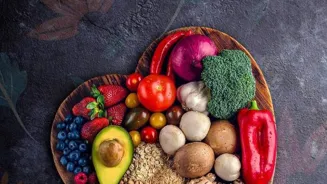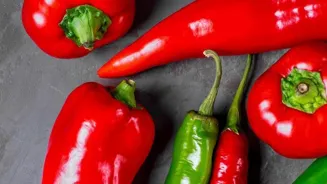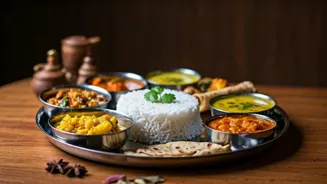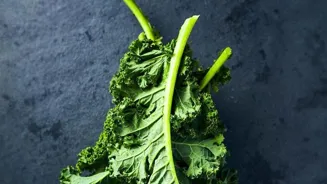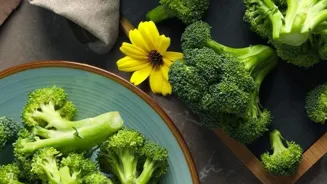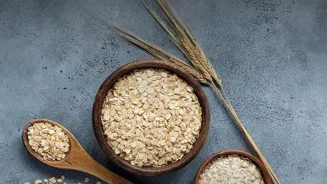Unlock the power of fibre for a healthier you! Discover 7 facts to transform your health. Dive in to learn more!
Are you feeling a bit sluggish lately, having tummy troubles, or simply wanting to boost
your overall health? The answer might just be simpler than you think: fibre! Often overlooked, dietary fibre is a true champion when it comes to well-being.
It is not just about "going number two" easily; it’s about a whole lot more. It is like the unsung hero of your plate. Many of us Indians, especially those in cities, are not getting enough fibre in our everyday food. We focus more on tasty eats rather than healthy eats.
Let's check out why this matters and how to easily add more fibre to your daily meals. This article unveils seven super important facts that will make you think seriously about fiber. So, let’s get set to learn how increasing your fibre intake can change your life for the better!
Fibre is like the cleaning crew for your digestive system. It sweeps through your intestines, grabbing onto waste and pushing it out of your body. This helps prevent constipation and keeps things moving smoothly. But that's just the start.
Different types of fiber are like different members of the cleaning crew, each with their special job. Some help lower your bad cholesterol, protecting your heart.
Others help control your blood sugar levels, which is very important, especially if you know folks who have diabetes or family history of it. Getting enough different kinds of fibre is essential for keeping your body running tip-top.
Think of it as an internal spring-cleaning – a little more fibre can make a big difference to how you feel every day! And who doesn't want to feel lighter, more energetic, and overall healthier? So, let's discover more about this amazing nutrient and how it helps you stay healthy.
Plus, it is easily available in all the basic foods that we can add to our diet.
Now let's dive into why exactly fiber deserves a place of pride in your diet chart. First up, better digestion. We all know that uncomfortable feeling of being bloated.
Well, fibre acts like a natural broom, cleaning out your digestive tract to keep everything going smoothly. It prevents constipation by adding bulk to your stool, making it easier to pass. But don't just think of it as a quick fix for tummy troubles.
Fibre also feeds the good bacteria in your gut, helping them grow and thrive. These happy bacterias, in turn, help your body digest food and absorb nutrients more effectively. This helps boost your immunity also. Next, fibre is stellar at keeping your heart healthy.
Soluble fibre, the kind found in oats, apples, and beans, can help lower bad cholesterol levels. This reduces your risk of heart disease and other heart-related problems. It is like giving your heart a little extra shield of protection.
And last but not least, fibre plays a significant role in weight management.
Fibre-rich foods tend to be filling. They add bulk to your meals without adding a ton of calories.
This means you are more likely to feel fuller for longer after eating a fibre-rich meal, which means you will feel less hungry longer. This can help you cut down unnecessary snacking and control your calorie intake. It is basically your natural partner in looking after your weight.
More stable blood sugar levels mean fewer energy crashes and less hunger pangs. Adding fibre to your diet isn't about depriving yourself. It's about making smart food choices that support your overall health.
When blood sugar levels are balanced, your body releases energy slowly and steadily, preventing those energy slumps in the afternoon and reducing your cravings for sugary snacks.
So, by increasing your fibre intake, you are not just improving your digestion; you are also doing your heart, your waistline, and your energy levels a solid favor. It is a win-win situation!
Now, let's reveal the seven amazing facts about fibre you absolutely need to know:
Soluble and insoluble fiber are crucial for health
Fibre comes in two forms: soluble and insoluble. Soluble fibre mixes with water to form a gel-like substance. This helps lower cholesterol and stabilize blood sugar. Insoluble fibre, on the other hand, adds bulk to your stool, promoting regularity. You need both for optimal health.
Some high-fiber foods are better sources than others
Not all high-fibre foods are created equal. While all fruits, vegetables, and whole grains contain fibre, some are better sources than others. Beans, lentils, and oats are fiber superstars, packing a big punch per serving.
Increase fibre intake gradually to avoid gas and bloating
You should increase fibre intake gradually. Adding a lot of fibre to your diet all at once can lead to gas and bloating. Start slowly, allowing your body to adjust. Also, always drink lots of water, as fibre absorbs water!
Fiber is crucial for health beyond digestion
Fibre is an essential nutrient, not just a digestive aid. As we've discussed, it plays a crucial role in heart health, blood sugar control, weight management, and more. Don't overlook it as a simple bathroom issue.
Processed foods lack fiber, choose whole foods for more fiber
Many processed foods lack fibre. When grains are refined, much of the fibre is stripped away. Opt for whole, unprocessed foods whenever possible to maximize your fibre intake. Read labels to confirm amount of fibre.
Indians lack fiber in diet; need to consume more
Most Indians don't get enough fibre. Surveys show that many of us only consume half the recommended daily amount. This highlights the importance of making a conscious effort to include more fibre-rich foods in our diets.
Adding fibre is easier than you think! Simple swaps like choosing brown rice over white rice, adding beans to your meals, and snacking on fruits and vegetables can make a big difference.
Okay, now that we know the "why" and the "what," let's turn our attention to the "how." Adding more fibre to your diet doesn't have to be challenging or require a complete overhaul of your eating habits. Small, gradual changes can go a long way.
Start by taking a look at your current meals and identifying areas where you can make simple swaps. For example, instead of white bread, choose whole wheat or multigrain bread. Swap out processed breakfast cereals for a bowl of oatmeal topped with fruits and nuts.
When preparing rice, opt for brown rice instead of white rice. Snack on fruits and vegetable sticks instead of biscuits. These simple changes can significantly increase your fibre intake without feeling restrictive. Beans and lentils are not just for those traditional recipes.
They are the superheroes of fiber-rich foods. Add them to your salads, soups, or even as a side dish to your meal. When cooking, consider including vegetables like broccoli, spinach, and carrots, which are excellent sources of fibre.
If you find it difficult to meet your fibre needs through diet alone, you can consider fibre supplements.
Another smart trick is to "hide" fibre into your meals. Add flaxseeds or chia seeds to your smoothies or yogurt for an extra boost of fibre.
You can also sneak in some finely chopped vegetables into your pasta sauce or curries. Remember to stay hydrated by drinking plenty of water throughout the day. Fibre absorbs water, and inadequate fluid intake can lead to constipation. Listen to your body.
If you experience gas or bloating, reduce your fibre intake slightly and gradually increase it again as your digestive system adjusts. It’s also important to remember that consistency is key.
Making small, sustainable changes to your diet over time is more effective than trying to make a dramatic overhaul all at once. So, start today with one or two simple changes, and gradually incorporate more fibre-rich foods into your daily routine.
Remember, adding fibre to your diet is a journey, not a destination. It's about making healthy choices that support your overall well-being. So, go ahead and embark on this fibre-filled adventure today, it'll do good!
